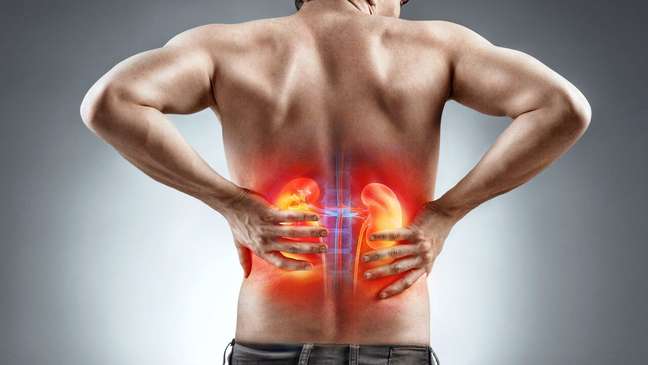Kidney stones are common, usually appear due to bad habits and can cause chronic pain

or kidney stonepopularly known as kidney stone, it is a common problem and can therefore cause serious damage to your well-being. So basically, the condition is the result of the appearance of rigid particles inside the organ. Also, it is something that can happen in different ways.
“Very current diseases and conditions such as obesity, hypertension and diabetes are risk factors for the formation of kidney stones. They lead to absenteeism at work and even chronic pain, when the stones are not properly studied,” explains the nephrologist, Dr. Caroline Reigada, Intensive Medicine Specialist of the Brazilian Association of Intensive Medicine.
What is a kidney stone
In this way, the kidney stone appears when there is an excess of some substance in the urine. That is, it can be calcium, oxalate and uric acid (giving rise to crystals). In addition, the cause can also be a lack of citrate in the urine, which is considered a protector against stone formation.
“All of this can occur when the pH (acidity) of the urine changes. Also, when we ingest little water, we urinate little. Soon, these crystals become saturated in the urine, forming so-called stones,” the doctor points out.
Kidney stones, how to prevent?
According to Dr. Reigada, the most common type of kidney stones is the one formed by the accumulation of calcium. However, cutting down on calcium-rich foods is not a good idea.
“Pay attention to the old guidelines. Do not eliminate calcium from your diet (milk and dairy products). Studies have already shown that a lack of calcium in the diet can stimulate stone formation and that, contrary to popular belief, the patient with tartar should eat a normal amount of foods with calcium per day, “explains the doctor.
In addition to calcium, uric acid can also cause kidney stones to form. “A diet with an excess of purines (seafood and meat) leads to an increased production of monosodium urate, which can turn into stone. This type of stone can have a family influence,” says the especislita.
Finally, the less common type of kidney stone is the struvite stone. However, it is the fastest growing and can even block the urinary system. “They are rare and associated with infections. If left untreated, they can cause loss of kidney function,” said the nephrologist.
Symptoms of kidney stones
- Very sharp, almost unbearable pain starting in the back and radiating up the abdomen towards the groin. It is a pain that manifests itself in colic, that is, with a peak of intense pain followed by some relief;
- Nausea and vomit;
- Blood in the urine
- Suspension or decrease in urinary flow;
- The need to urinate more often
Importance of the treatment
“It is imperative that the patient follows the doctor-led treatment protocol. If not treated correctly, in five years there will be a 50% chance that the patient will have kidney stones again, with new pain and symptoms related to the passage of the stone. through the urinary tract, up to renal obstruction, which requires urgent surgery “, concludes Dr. Reigada.
Sources: Ministry of Health and Dr. Caroline Reigada, nephrologist, specialist in Intensive Medicine of the Brazilian Association of Intensive Medicine.
Source: Terra
Benjamin Smith is a fashion journalist and author at Gossipify, known for his coverage of the latest fashion trends and industry insights. He writes about clothing, shoes, accessories, and runway shows, providing in-depth analysis and unique perspectives. He’s respected for his ability to spot emerging designers and trends, and for providing practical fashion advice to readers.







